Continued from Part Three
Sometime before dawn I was roused by shouted voices from below:
“Off belay!”
“What?!”
“Off. Belay!”
“Huh?”
“OFFFFF BEELAAAAY!”
…silence. I fell back asleep, barely aware of the pre-dawn light sneaking around the rounded aréte of the Nose. At this point in the route we were facing southwest with a spectacular view up-canyon: pitch 24 or something.
A few minutes later I was again awakened, this time by the jingling of climbing hardwear. Jim Donini’s face popped up over the ledge. No f’ing way, I thought. He used the bolted anchors about five feet above, trying not to step on me all curled up in my mummy bag in the fetal position.
“Off belay!”
Christ, I thought. Guess I might as well get up.
“Got any coffee? Man, that’d be a lifesaver!”
“Well, yeah, actually I think we might. Would have to get out the stove, though.” I was excited to help out a couple old climbing legends, so I grabbed my jumars, packed up my sleeping bag, and jugged back up to the upper ledge, about 20 feet above. We set up the stove and started boiling water. It was clear that we had packed way too much water at this point, so we elected to leave a gallon jug for some other unfortunate party.
“Coffee’s ready when you are.” We only had two of those Starbucks Via packets left, which only allowed for two small cups. I had a taste and offered some to Jim. He was stoked.
“Ahhhh…you have no idea how good this tastes.” They’d been on the move for 20+ hours. Soon George was leading up the next pitch and Eric and I were packing up the haul bag. We would end up having to wait, an ominous sign of the day to come.
The next 5-6 hours were spent hanging out with Jim at belays talking while he urged George on. Come on, George, climb faster. They were plodding on, drawing from a lifetime’s experience of huge pushes in the mountains. We talked about climbing in the good ol’ days, a few of the routes he had put up in the valley, even their experience on Latok I. It was probably the coolest possible way to endure waiting for hours at belays. By Camp VI, two pitches above, we had run into Zach and Lara again. They had stayed there the night before and had elected to let the two septuagenarians pass. I was feeling surprisingly good at this point, so I elected to take the next block of leads. It was noon. Six hours to climb two pitches. Eric was not in a good mental state, kind of freaking out about the forecasted weather but at least with a couple of friendly folk to help pass the time.
The next pitch was awesome, starting with a hand crack and continuing to really thin pin scars in a corner. This is the famous Changing Corners, or the crux free climbing pitch at 5.14a. As an aid pitch it seemed quite easy, but maybe there was a bunch of fixed gear or something. Zach had led the same pitch before me, but it became clear that I had climbed it significantly quicker, so they graciously offered for us to pass. I was a bit fed up with waiting at this point so this was great news. Eric and I started to get in the zone, and with efficient belay changeovers and mostly-free lead climbing, we made quick time up the next few pitches. These pitches are some of my fondest memories of the route — with a ton of classic, moderate free climbing, and due to a light haul bag, a minimum of suffering.
By late afternoon I was at the top of pitch 30 and had caught up to Jim and George. I asked if he would fix a line to the top for us, since the last pitch is just a bolt ladder and we were running short on time. He agreed, and we had pretty much done it. Eric elected to go first, Zach next, and Lara and I jugged two lines simultaneously to get over the final roof to the slabs on top. It was over! I honestly didn’t feel a whole lot of relief or satisfaction or anything, just business as usual breaking down the belay, shuttling gear, and so on. Eric was almost ecstatic with relief but it was all rather matter-of-fact for me. Yup, we had done it.
As it was about 8PM by this time, we elected to bivy once more on top before heading down the next morning. We had plenty of water and ample food so it wasn’t so bad. I borrowed an emergency bivy from Eric which ended up being key, as it rained pretty steadily that night for several hours. We awoke soaked and still exhausted and stumbled down the Yosemite Falls trail (don’t do this! Take the East Ledges) with our junkshow of a rack and haul bag. It was a gorgeous morning and we watched the clouds part from the top of El Cap to unveil a brilliant, sunny day. We gawked at the Falls with the tourists and meandered back down over the course of the day, exhausted but satisfied, with the promise of (yet another) pizza at Curry Village awaiting us.
With so much time, I feel like it was no big deal, but supposedly only one of five people who start the Nose actually end up topping out, so maybe there’s something to it. It was a grand adventure and certainly one of the highlights of my climbing career. Perhaps the Salathé next spring?
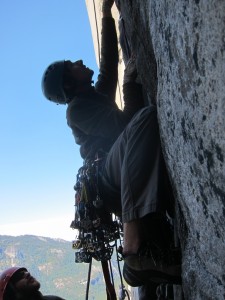
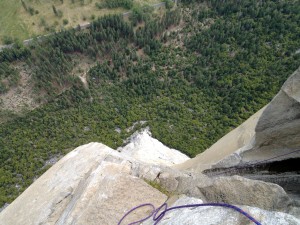
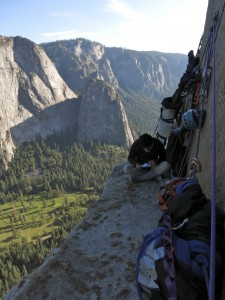
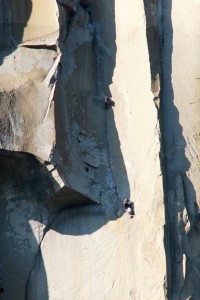
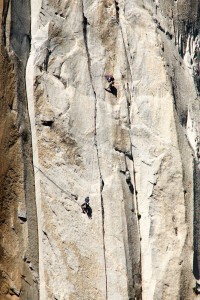
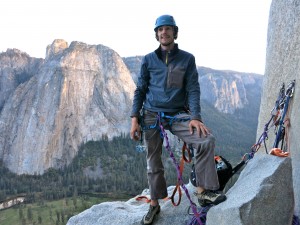
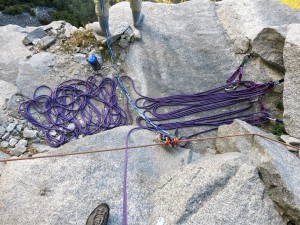
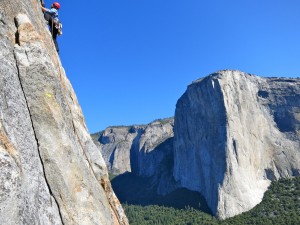
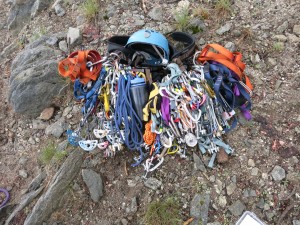




Recent Comments